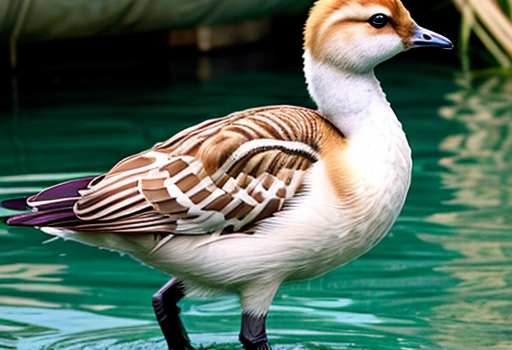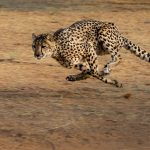
Gosling: Exploring the Enigmatic Waterfowl
Welcome to the fascinating world of goslings! These adorable waterfowl are known for their endearing appearance and intriguing behaviors. In this article we will delve into the various aspects of goslings including their appearance , habitat , life cycle , feeding habits , behavioral patterns , threats and conservation efforts. So , let’s embark on this journey to explore the mysterious world of goslings!
1. Appearance and Characteristics of Goslings
Goslings are young geese that have recently hatched from their eggs. They possess a distinctive charm with their fluffy feathers, rounded bodies and cute webbed feet. These young waterfowl exhibit a range of colors including shades of gray , brown and yellow. As they grow older their feathers gradually develop into the recognizable plumage of adult geese.
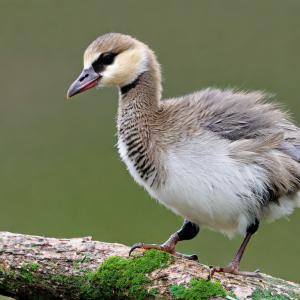
2. Habitat and Distribution
Goslings may be found in a number of settings across the world. They love regions near bodies of water including lakes, ponds, rivers, and marshes. These environments offer them with a plenty of food and shelter. Goslings are found all throughout North America, Europe, Asia, and portions of Africa, demonstrating their resilience to a variety of temperatures and conditions
3. The Life Cycle of Goslings
The life cycle of goslings begins when they hatch from their eggs, which their parents meticulously incubate. Once hatched, goslings are highly dependent on their parents for warmth , protection and guidance.
They quickly develop and learn essential skills such as swimming and foraging for food. As they mature , goslings transform , shedding downy feathers and growing stronger wings to prepare for flight.
4. Feeding Habits
Goslings are primarily herbivorous feeding on a diet of aquatic plants , grasses , grains and insects. They have a unique adaptation called lamellae on their beaks , which enables them to filter out water and extract nutrients from vegetation.
Goslings spend a significant amount of time grazing and foraging honing their feeding skills under the watchful eyes of their parents.
5. Behavioral Patterns
Goslings exhibit intriguing behavioral patterns that are a delight to observe. They are highly social creatures and form close-knit family groups. Goslings often engage in playful activities such as swimming races and synchronized diving.
They also communicate through vocalizations including honking and whistling, to convey various messages to their family members.
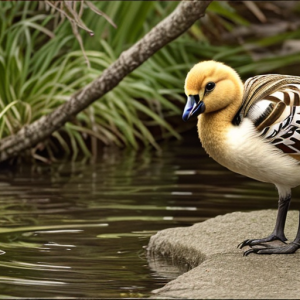
6. Threats and Conservation
Like many other species, goslings face various threats to their survival. Habitat loss due to urbanization and pollution significantly challenges their well-being.
Additionally, predation by natural predators and disturbance by humans can disrupt their nesting and feeding habits. To protect these charismatic waterfowl, conservation efforts focus on preserving their natural habitats, raising awareness, and implementing measures to minimize human interference.
7. Gosling Watching: A Popular Activity
Gosling watching has gained popularity among nature enthusiasts and birdwatchers. Observing goslings in their natural habitat offers a unique opportunity to witness their playful antics and learn more about their behaviors. Many nature reserves and wetlands organize guided tours and educational programs, allowing visitors to appreciate the beauty of goslings while promoting their conservation.
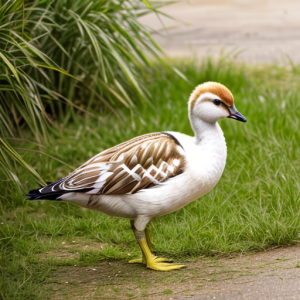
8. FAQs about Goslings
Q1: How long does a gosling take to grow into an adult goose?
A1: The development period for goslings varies by species, but it usually takes two to three years to reach full maturity.
Q2: Are goslings able to fly?
A2: Goslings begin developing their flight feathers at a young age, but they typically gain the ability to fly when they are around two to three months old.
Q3: Do goslings migrate?
A3: Some gosling species are migratory and undertake long-distance journeys for suitable breeding and feeding grounds. Others may have more localized movements.
Q4: What is the lifespan of a gosling?
A4: Goslings have a relatively short lifespan compared to adult geese. On average they live for about two to three years in the wild.
Q5: Can goslings swim from birth?
A5: Goslings are naturally adept swimmers and can take to the water within hours of hatching. They rely on their parents’ guidance to navigate their aquatic environment.

Conclusion
Goslings are captivating creatures that captivate us with their cuteness and fascinating behaviors. From their adorable appearance to their social dynamics goslings always amaze us.
However , it is crucial to recognize their challenges and the importance of conservation efforts to ensure their continued existence. By appreciating and protecting these charismatic waterfowl we can contribute to preserving the natural beauty of our environment for generations to come.









